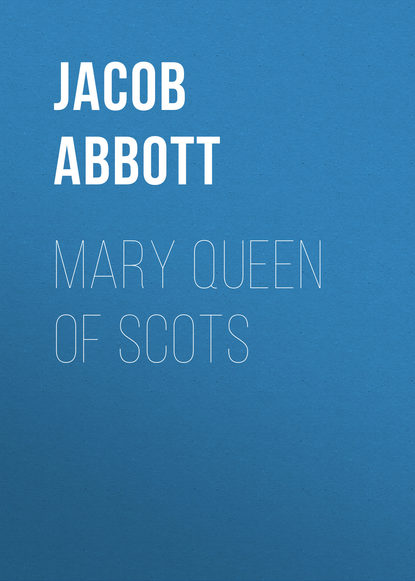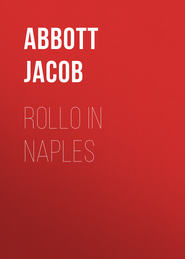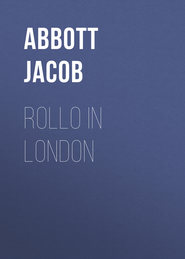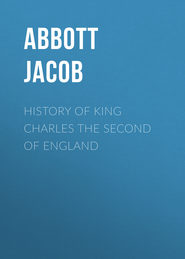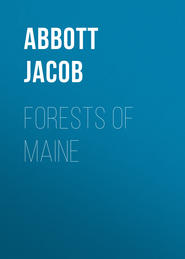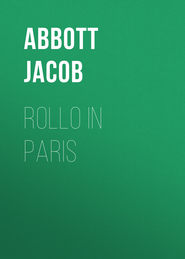По всем вопросам обращайтесь на: info@litportal.ru
(©) 2003-2025.
✖
Mary Queen of Scots
Настройки чтения
Размер шрифта
Высота строк
Поля
There was a beautiful fountain in the center of the court-yard, where water spouted out from the mouths of carved images, and fell into marble basins below. The ruins of this fountain and of the images remain there still. The den at d was a round pit, like a well, which you could look down into from above: it was about ten feet deep. They used to keep lions in such dens near the palaces and castles in those days. A lion in a den was a sort of plaything in former times, as a parrot or a pet lamb is now: this was in keeping with the fierce and warlike spirit of the age. If they had a lion there in Mary's time, Janet often, doubtless, took her little charge out to see it, and let her throw down food to it from above. The den is there now. You approach it upon the top of a broad embankment, which is as high as the depth of the den, so that the bottom of the den is level with the surface of the ground, which makes it always dry. There is a hole, too, at the bottom, through the wall, where they used to put the lion in.
Explanation of the engraving.
The foregoing plan of the buildings and grounds of Linlithgow is drawn as maps and plans usually are, the upper part toward the north. Of course the room a, where Mary was born, is on the western side. The adjoining engraving represents a view of the palace on this western side. The church is seen at the right; and the lawn, where Janet used to take Mary out to breathe the air, is in the fore-ground. The shore of the lake is very near, and winds beautifully around the margin of the promontory on which the palace stands. Of course the lion's den, and the ancient avenue of approach to the palace, are round upon the other side, and out of sight in this view. The approach to the palace, at the present day, is on the southern side, between the church and the trees on the right of the picture.
The coronation.
Mary remained here at Linlithgow for a year or two; but when she was about nine months old, they concluded to have the great ceremony of the coronation performed, as she was by that time old enough to bear the journey to Stirling Castle, where the Scottish kings and queens were generally crowned. The coronation of a queen is an event which always excites a very deep and universal interest among all persons in the realm; and there is a peculiar interest felt when, as was the case in this instance, the queen to be crowned is an infant just old enough to bear the journey. There was a very great interest felt in Mary's coronation. The different courts and monarchs of Europe sent embassadors to be present at the ceremony, and to pay their respects to the infant queen; and Stirling became, for the time being, the center of universal attraction.
Stirling Castle.
Its situation.
Rocky hill.
Stirling is in the very heart of Scotland. It is a castle, built upon a rock, or, rather, upon a rocky hill, which rises like an island out of the midst of a vast region of beautiful and fertile country, rich and verdant beyond description. Beyond the confines of this region of beauty, dark mountains rise on all sides; and wherever you are, whether riding along the roads in the plain, or climbing the declivities of the mountains, you see Stirling Castle, from every point, capping its rocky hill, the center and ornament of the broad expanse of beauty which surrounds it.
Stirling Castle is north of Linlithgow, and is distant about fifteen or twenty miles from it. The road to it lies not far from the shores of the Frith of Forth, a broad and beautiful sheet of water. The castle, as has been before remarked, was on the summit of a rocky hill. There are precipitous crags on three sides of the hill, and a gradual approach by a long ascent on the fourth side. At the top of this ascent you enter the great gates of the castle, crossing a broad and deep ditch by means of a draw-bridge. You enter then a series of paved courts, with towers and walls around them, and finally come to the more interior edifices, where the private apartments are situated, and where the little queen was crowned.
The coronation scene.
It was an occasion of great pomp and ceremony, though Mary, of course, was unconscious of the meaning of it all. She was surrounded by barons and earls, by embassadors and princes from foreign courts, and by the principal lords and ladies of the Scottish nobility, all dressed in magnificent costumes. They held little Mary up, and a cardinal, that is, a great dignitary of the Roman Catholic Church, placed the crown upon her head. Half pleased with the glittering show, and half frightened at the strange faces which she saw every where around her, she gazed unconsciously upon the scene, while her mother, who could better understand its import, was elated with pride and joy.
Linlithgow and Stirling.
The Highlands and the Highlanders.
Linlithgow and Stirling are in the open and cultivated part of Scotland. All the northern and western part of the country consists of vast masses of mountains, with dark and somber glens among them, which are occupied solely by shepherds and herdsmen with their flocks and herds. This mountainous region was called the Highlands, and the inhabitants of it were the Highlanders. They were a wild and warlike class of men, and their country was seldom visited by either friend or foe. At the present time there are beautiful roads all through the Highlands, and stage-coaches and private carriages roll over them every summer, to take tourists to see and admire the picturesque and beautiful scenery; but in the days of Mary the whole region was gloomy and desolate, and almost inaccessible.
Religious disturbances.
Mary remained in Linlithgow and Stirling for about two years, and then, as the country was becoming more and more disturbed by the struggles of the great contending parties – those who were in favor of the Catholic religion and alliance with France on the one hand, and of those in favor of the Protestant religion and alliance with England on the other hand – they concluded to send her into the Highlands for safety.
Lake Menteith.
Mary's companions.
The four Maries.
It was not far into the country of the Highlands that they concluded to send her, but only into the borders of it. There was a small lake on the southern margin of the wild and mountainous country, called the Lake of Menteith. In this lake was an island named Inchmahome, the word inch being the name for island in the language spoken by the Highlanders. This island, which was situated in a very secluded and solitary region, was selected as Mary's place of residence. She was about four years old when they sent her to this place. Several persons went with her to take care of her, and to teach her. In fact, every thing was provided for her which could secure her improvement and happiness. Her mother did not forget that she would need playmates, and so she selected four little girls of about the same age with the little queen herself, and invited them to accompany her. They were daughters of the noblemen and high officers about the court. It is very singular that these girls were all named Mary. Their names in full were as follows:
Mary Beaton,
Mary Fleming,
Mary Livingstone,
Mary Seaton
These, with Mary Stuart, which was Queen Mary's name, made five girls of four or five years of age, all named Mary.
Angry disputes.
Change of plan.
Mary lived two years in this solitary island. She had, however, all the comforts and conveniences of life, and enjoyed herself with her four Maries very much. Of course she knew nothing, and thought nothing of the schemes and plans of the great governments for having her married, when she grew up, to the young English prince, who was then a little boy of about her own age, nor of the angry disputes in Scotland to which this subject gave rise. It did give rise to very serious disputes. Mary's mother did not like the plan at all. As she was herself a French lady and a Catholic, she did not wish to have her daughter marry a prince who was of the English royal family, and a Protestant. All the Catholics in Scotland took her side. At length the Earl of Arran, who was the regent, changed to that side; and finally the government, being thus brought over, gave notice to King Henry VIII. that the plan must be given up, as they had concluded, on the whole, that Mary should not marry his son.
Henry's anger.
Henry's sickness and death.
King Henry was very much incensed. He declared that Mary should marry his son, and he raised an army and sent it into Scotland to make war upon the Scotch again, and compel them to consent to the execution of the plan. He was at this time beginning to be sick, but his sickness, instead of softening his temper, only made him the more ferocious and cruel. He turned against his best friends. He grew worse, and was evidently about to die; but he was so irritable and angry that for a long time no one dared to tell him of his approaching dissolution, and he lay restless, and wretched, and agitated with political animosities upon his dying bed. At length some one ventured to tell him that his end was near. When he found that he must die, he resigned himself to his fate. He sent for an archbishop to come and see him, but he was speechless when the prelate came, and soon afterward expired.
War renewed.
Danger in Edinburgh.
The English government, however, after his death, adhered to his plan of compelling the Scotch to make Mary the wife of his son. They sent an army into Scotland. A great battle was fought, and the Scotch were defeated. The battle was fought at a place not far from Edinburgh, and near the sea. It was so near the sea that the English fired upon the Scotch army from their ships, and thus assisted their troops upon the shore. The armies had remained several days near each other before coming to battle, and during all this time the city of Edinburgh was in a state of great anxiety and suspense, as they expected that their city would be attacked by the English if they should conquer in the battle. The English army did, in fact, advance toward Edinburgh after the battle was over, and would have got possession of it had it not been for the castle. There is a very strong castle in the very heart of Edinburgh, upon the summit of a rocky hill.[1 - See the view of Edinburgh, page 179 (#litres_trial_promo).]
Aid from France.
New plan.
These attempts of the English to force the Scotch government to consent to Mary's marriage only made them the more determined to prevent it. A great many who were not opposed to it before, became opposed to it now when they saw foreign armies in the country destroying the towns and murdering the people. They said they had no great objection to the match, but that they did not like the mode of wooing. They sent to France to ask the French king to send over an army to aid them, and promised him that if he would do so they would agree that Mary should marry his son. His son's name was Francis.
Going to France.
The French king was very much pleased with this plan. He sent an army of six thousand men into Scotland to assist the Scotch against their English enemies. It was arranged, also, as little Mary was now hardly safe among all these commotions, even in her retreat in the island of Inchmahome, to send her to France to be educated there, and to live there until she was old enough to be married. The same ships which brought the army from France to Scotland, were to carry Mary and her retinue from Scotland to France. The four Maries went with her.
Dumbarton Castle.
Rock of Dumbarton.
They bade their lonely island farewell, and traveled south till they came to a strong castle on a high, rocky hill, on the banks of the River Clyde. The name of this fortress is Dumbarton Castle. Almost all the castles of those times were built upon precipitous hills, to increase the difficulties of the enemies in approaching them. The Rock of Dumbarton is a very remarkable one. It stands close to the bank of the river. There are a great many ships and steam-boats continually passing up and down the Clyde, to and from the great city of Glasgow, and all the passengers on board gaze with great interest, as they sail by, on the Rock of Dumbarton, with the castle walls on the sides, and the towers and battlements crowning the summit. In Mary's time there was comparatively very little shipping on the river, but the French fleet was there, waiting opposite the castle to receive Mary and the numerous persons who were to go in her train.[2 - Travelers who visit Scotland from this country at the present day, usually land first, at the close of the voyage across the Atlantic, at Liverpool, and there take a Glasgow steamer. Glasgow, which is the great commercial city of Scotland, is on the River Clyde. This river flows northward to the sea. The steamer, in ascending the river, makes its way with difficulty along the narrow channel, which, besides being narrow and tortuous, is obstructed by boats, ships, steamers, and every other variety of water-craft, such as are always going to and fro in the neighborhood of any great commercial emporium.The tourists, who stand upon the deck gazing at this exciting scene of life and motion, have their attention strongly attracted, about half way up the river, by this Castle of Dumbarton, which crowns a rocky hill, rising abruptly from the water's edge, on the north side of the stream. It attracts sometimes the more attention from American travelers, on account of its being the first ancient castle they see. This it likely to be the case if they proceed to Scotland immediately on landing at Liverpool.]
Journey to Dumbarton.
The four Maries.
Departure from Scotland.
Mary was escorted from the island where she had been living, across the country to Dumbarton Castle, with a strong retinue. She was now between five and six years of age. She was, of course, too young to know any thing about the contentions and wars which had distracted her country on her account, or to feel much interest in the subject of her approaching departure from her native land. She enjoyed the novelty of the scenes through which she passed on her journey. She was pleased with the dresses and the arms of the soldiers who accompanied her, and with the ships which were floating in the river, beneath the walls of the Castle of Dumbarton, when she arrived there. She was pleased, too, to think that, wherever she was to go, her four Maries were to go with her. She bade her mother farewell, embarked on board the ship which was to receive her, and sailed away from her native land, not to return to it again for many years.
Chapter II
Her Education in France
1548-1556





